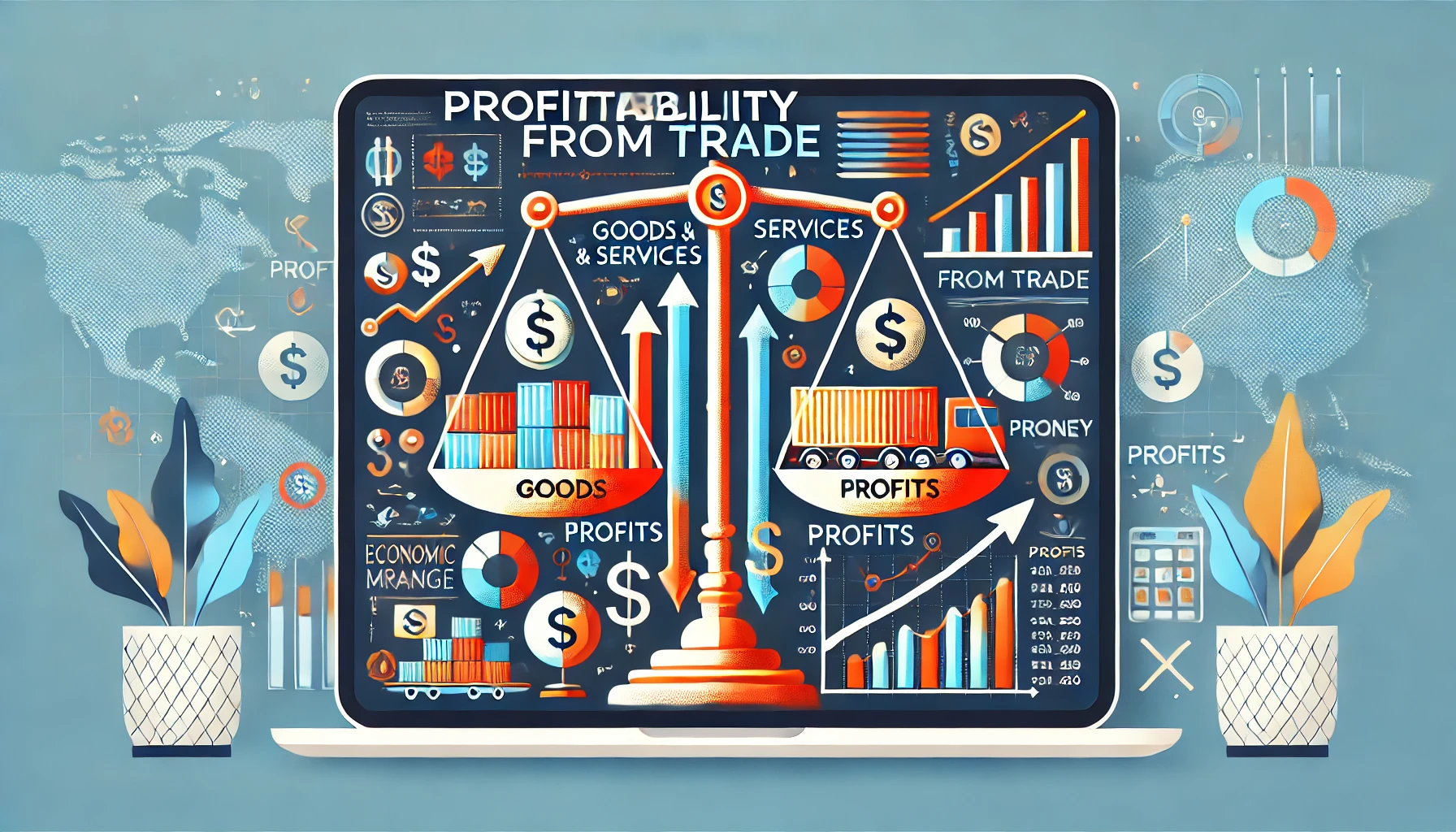Definition: Profitability from trade refers to the gains or profits that individuals, businesses, or countries realize as a result of engaging in trade. These profits arise from the efficient exchange of goods and services, where parties involved in trade are able to sell their products at a price higher than their production costs, or buy products at a price lower than their perceived value.
How Trade Leads to Profitability:
- Comparative Advantage:
- Concept: Comparative advantage occurs when a country, business, or individual can produce a good or service at a lower opportunity cost compared to others. By specializing in the production of goods and services where they have a comparative advantage and trading them for other goods, parties can maximize their overall efficiency and profitability.
- Profitability: By focusing on producing what they are most efficient at and trading for other goods, entities can sell their specialized products at competitive prices, leading to higher profits.
- Economies of Scale:
- Concept: Economies of scale refer to the cost advantages that businesses or countries experience as production scales up. Larger production volumes often lead to lower per-unit costs due to the spread of fixed costs over a larger number of units.
- Profitability: Engaging in trade allows businesses and countries to access larger markets, enabling them to increase production, achieve economies of scale, reduce costs, and enhance profitability.
- Market Expansion:
- Concept: Trade opens up new markets beyond domestic boundaries, giving businesses access to a larger customer base. This can lead to increased sales and revenue, as well as diversification of income sources.
- Profitability: By expanding into international markets, businesses can tap into new demand, reduce dependency on domestic markets, and increase profitability through higher sales volumes.
- Product Differentiation and Innovation:
- Concept: Trade encourages competition, which in turn drives innovation and product differentiation. Businesses strive to create unique products or improve existing ones to stand out in the global market.
- Profitability: Innovation and product differentiation can command higher prices, attract more customers, and increase market share, all of which contribute to higher profitability.
- Cost Reduction:
- Concept: Trade enables businesses to source raw materials, components, or labor from countries where these inputs are cheaper or more efficient to produce.
- Profitability: By lowering production costs through trade, businesses can improve their profit margins and offer competitive pricing in the market.
- Access to New Technologies and Resources:
- Concept: Trade facilitates the transfer of technology, knowledge, and resources across borders. Countries and businesses can access advanced technologies and resources that may not be available domestically.
- Profitability: Utilizing cutting-edge technology and resources can improve productivity, reduce costs, and create higher-quality products, leading to increased profitability.
- Diversification and Risk Management:
- Concept: Trade allows businesses and countries to diversify their markets, products, and sources of supply. This diversification helps spread risk and reduces vulnerability to economic downturns in any single market.
- Profitability: By diversifying through trade, businesses can maintain stable revenue streams, minimize losses during economic fluctuations, and enhance long-term profitability.
Examples of Profitability from Trade:
- A Technology Company:
- A technology company in the United States that specializes in software development may find that the cost of software engineering talent is lower in India. By outsourcing part of its development to India, the company reduces costs, maintains high-quality production, and increases its profit margins.
- An Agricultural Exporter:
- A country with favorable climate conditions for growing coffee, such as Brazil, can produce coffee more efficiently than many other countries. By exporting coffee, Brazil capitalizes on its comparative advantage, selling its product at a profit on the international market.
- A Global Retailer:
- A global retailer like Walmart benefits from economies of scale by sourcing products from low-cost producers around the world. This allows Walmart to offer competitive prices to consumers while maintaining healthy profit margins.
Challenges to Profitability from Trade:
- Trade Barriers:
- Tariffs, quotas, and other trade restrictions can limit access to markets, increase costs, and reduce profitability.
- Exchange Rate Fluctuations:
- Changes in exchange rates can impact the profitability of international trade, particularly for businesses that operate in multiple currencies.
- Competition:
- Intense global competition can drive down prices and profit margins, especially for standardized products with little differentiation.
- Regulatory Compliance:
- Navigating different regulatory environments and standards across countries can increase costs and reduce profitability.
- Logistics and Supply Chain Risks:
- Complex logistics and supply chain challenges, such as delays, tariffs, and transportation costs, can affect profitability.
Conclusion: Profitability from trade arises from the ability to specialize, access new markets, reduce costs, and innovate. By engaging in trade, businesses and countries can leverage their comparative advantages, achieve economies of scale, and expand their market reach, all of which contribute to higher profits. However, to maximize profitability, it is essential to manage the challenges associated with international trade, such as trade barriers, exchange rate risks, and competitive pressures. When managed effectively, trade can be a powerful driver of profitability and economic growth

